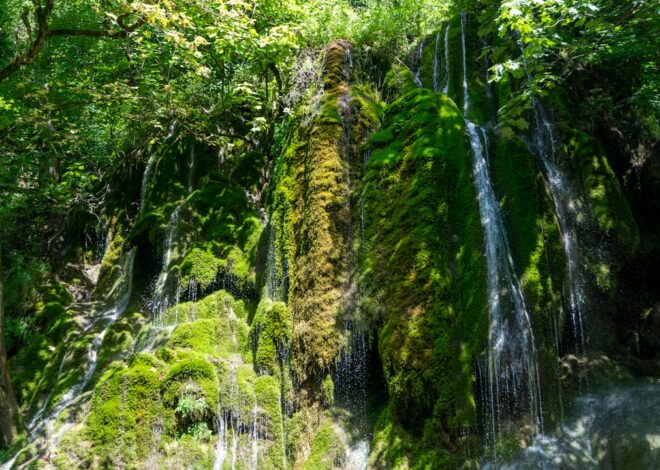
The Quiet Escape: Silent Tourism Destinations
Silent tourism is an emerging trend that emphasizes tranquility and the appreciation of serene environments, allowing travelers to escape the cacophony of modern life. In a world increasingly dominated by noise—be it from bustling cities, crowded tourist attractions, or the incessant hum of technology—silent tourism offers a refreshing alternative. This form of travel encourages individuals to seek out destinations where silence reigns, fostering a deeper connection with nature and oneself.
The concept is not merely about the absence of sound; it encompasses a holistic experience that promotes mindfulness, reflection, and rejuvenation. The roots of silent tourism can be traced back to the growing awareness of mental health and well-being. As people grapple with the stresses of daily life, many are turning to travel as a means of escape.
However, traditional tourism often exacerbates stress rather than alleviating it. Silent tourism addresses this issue by providing spaces where visitors can immerse themselves in quietude, allowing for introspection and relaxation. This movement is gaining traction as more travelers seek meaningful experiences that prioritize peace over the frenetic pace of conventional tourism.
Key Takeaways
- Silent tourism promotes travel to destinations that offer peace, tranquility, and a break from the hustle and bustle of everyday life.
- Benefits of silent tourism destinations include reduced stress, improved mental health, and a deeper connection with nature and local culture.
- Top silent tourism destinations around the world include places like Iceland, Bhutan, the Faroe Islands, and the Scottish Highlands.
- Activities and experiences in silent tourism destinations can include nature walks, meditation retreats, stargazing, and cultural immersion with local communities.
- Tips for planning a silent tourism trip include researching off-the-beaten-path destinations, packing light, and respecting local customs and traditions.
Benefits of Silent Tourism Destinations
Mental Rejuvenation and Enhanced Creativity
In environments characterized by silence, individuals can engage in deep reflection, leading to enhanced creativity and problem-solving abilities. Studies have shown that exposure to quiet settings can reduce stress levels, lower blood pressure, and improve overall mental health. This makes silent tourism not just a leisure activity but a vital component of self-care.
Connection with Nature
Many silent destinations are located in remote areas, surrounded by breathtaking landscapes that invite exploration and contemplation. The absence of noise pollution allows travelers to fully appreciate the sounds of nature—the rustling of leaves, the gentle flow of water, or the distant call of wildlife. This immersive experience can lead to a greater appreciation for the environment and a desire to protect these tranquil spaces for future generations.
Enhanced Experience through Silence
By prioritizing silence, travelers often find themselves more attuned to their surroundings, enhancing their overall experience.
Top Silent Tourism Destinations around the World

Several destinations around the globe epitomize the essence of silent tourism, each offering unique landscapes and experiences that promote tranquility. One such location is the Lofoten Islands in Norway. Renowned for their dramatic peaks and pristine beaches, these islands provide an idyllic setting for those seeking solitude.
Visitors can hike through untouched wilderness, gaze at the Northern Lights in winter, or simply enjoy the stillness of the fjords. The remote nature of Lofoten ensures that noise is kept to a minimum, allowing travelers to immerse themselves in the serene beauty of their surroundings. Another remarkable destination is the Japanese Zen gardens, particularly those found in Kyoto.
These meticulously designed spaces are crafted to promote meditation and reflection. The simplicity and elegance of the gardens encourage visitors to slow down and appreciate the beauty of nature in silence. Walking through these gardens, one can experience a profound sense of peace as they engage with the carefully arranged rocks, raked gravel, and strategically placed plants.
The cultural significance of these gardens adds an enriching layer to the silent tourism experience, making them a must-visit for those seeking tranquility.
Activities and Experiences in Silent Tourism Destinations
| Activity | Location | Duration | Cost |
|---|---|---|---|
| Hiking | Mountain trails | 3-5 hours | 0 (self-guided) |
| Bird Watching | Forest reserves | 2-4 hours | 10 (guided tour) |
| Yoga and Meditation | Quiet retreats | 1-2 hours | 20 (group session) |
| Photography | Scenic viewpoints | Flexible | 0 (self-guided) |
Engaging in activities that promote silence and mindfulness is central to the silent tourism experience. Meditation retreats are particularly popular in destinations known for their tranquility. For instance, many travelers flock to places like Bali, Indonesia, where numerous retreats offer guided meditation sessions amidst lush rice paddies and serene landscapes.
These retreats often incorporate yoga and wellness practices, allowing participants to disconnect from their daily lives and reconnect with their inner selves. Nature walks and hikes are also integral to silent tourism. In locations such as the Canadian Rockies or the Scottish Highlands, trails meander through breathtaking scenery, providing ample opportunities for quiet contemplation.
Walking in silence allows travelers to absorb their surroundings fully; they can listen to the subtle sounds of nature while reflecting on their thoughts. Birdwatching is another activity that aligns perfectly with silent tourism, as it requires patience and stillness—qualities that enhance the overall experience.
Tips for Planning a Silent Tourism Trip
Planning a silent tourism trip requires careful consideration to ensure that the experience remains peaceful and rejuvenating. First and foremost, choosing the right destination is crucial. Researching locations known for their tranquility is essential; look for places that prioritize natural beauty over commercial attractions.
Remote areas or national parks often provide the ideal backdrop for silent tourism. Accommodations play a significant role in maintaining a peaceful atmosphere. Opting for eco-lodges or retreats that emphasize sustainability can enhance the experience.
These establishments often prioritize quietness and offer amenities designed for relaxation, such as meditation spaces or nature trails. Additionally, consider traveling during off-peak seasons to avoid crowds and noise associated with high tourist traffic. Another important aspect is to plan activities that align with the principles of silent tourism.
Incorporating time for meditation, yoga, or simply enjoying nature without distractions can significantly enhance your experience. Limiting screen time during your trip will also help maintain a sense of calm and presence in your surroundings.
Sustainable Practices in Silent Tourism

Sustainability is a core principle of silent tourism, as many destinations are located in fragile ecosystems that require protection. Travelers are encouraged to adopt practices that minimize their environmental impact while enjoying these serene locations. One effective approach is to choose eco-friendly accommodations that prioritize sustainable practices such as solar energy use, water conservation, and waste reduction.
Engaging in responsible wildlife observation is another way to practice sustainability while enjoying silent tourism experiences. This involves respecting natural habitats and maintaining a safe distance from animals to avoid disturbing their routines. Many silent tourism destinations offer guided tours led by knowledgeable locals who emphasize conservation efforts and educate visitors about local ecosystems.
Additionally, supporting local communities through responsible tourism practices can contribute to sustainable development in these areas. Purchasing handmade crafts or dining at local restaurants not only enriches your travel experience but also helps sustain local economies while preserving cultural heritage.
The Growing Popularity of Silent Tourism
The rise of silent tourism reflects broader societal shifts towards mindfulness and well-being. As people become increasingly aware of the detrimental effects of stress and noise pollution on mental health, many are seeking out experiences that promote peace and tranquility. This trend has been further accelerated by the global pandemic, which forced many individuals to reevaluate their priorities and seek solace in nature.
Social media has also played a significant role in popularizing silent tourism. Travelers are increasingly sharing their experiences in serene locations, inspiring others to seek out similar escapes from the hustle and bustle of everyday life. The visual appeal of tranquil landscapes—whether it be misty mountains or serene lakes—captures attention and encourages others to explore these peaceful destinations.
Moreover, wellness tourism has seen substantial growth in recent years, with many travelers prioritizing health-focused experiences over traditional sightseeing. Silent tourism fits seamlessly into this trend, offering opportunities for relaxation, reflection, and rejuvenation that resonate with those seeking holistic travel experiences.
Embracing Silence in Travel
Silent tourism represents a profound shift in how we approach travel in an increasingly noisy world. By prioritizing tranquility and mindfulness, travelers can cultivate deeper connections with themselves and their surroundings. The benefits of engaging with silent destinations extend beyond mere relaxation; they encompass mental rejuvenation, environmental appreciation, and sustainable practices that contribute positively to local communities.
As this trend continues to grow in popularity, it invites us all to reconsider our travel habits and embrace silence as an essential component of our journeys. Whether it’s through meditation retreats in Bali or serene hikes in Norway’s Lofoten Islands, silent tourism offers a pathway to rediscovering peace amidst life’s chaos. By choosing destinations that prioritize tranquility and engaging in mindful practices during our travels, we can create enriching experiences that resonate long after we return home.
FAQs
What is silent tourism?
Silent tourism refers to the trend of travelers seeking out destinations that offer peace and quiet, away from the hustle and bustle of crowded tourist attractions.
What are some examples of destinations designed for silent tourism?
Examples of destinations designed for silent tourism include remote islands, secluded mountain retreats, and tranquil countryside locations.
What are the benefits of silent tourism?
Silent tourism offers travelers the opportunity to relax, unwind, and recharge in peaceful surroundings. It also allows for a deeper connection with nature and the local culture.
How can travelers find destinations suitable for silent tourism?
Travelers can research and seek out destinations that are known for their tranquility, such as national parks, nature reserves, and off-the-beaten-path locations. They can also look for accommodations that specifically cater to silent tourism.
What are some activities that silent tourism destinations offer?
Activities at silent tourism destinations may include hiking, birdwatching, meditation, yoga, stargazing, and other nature-based and wellness activities.


